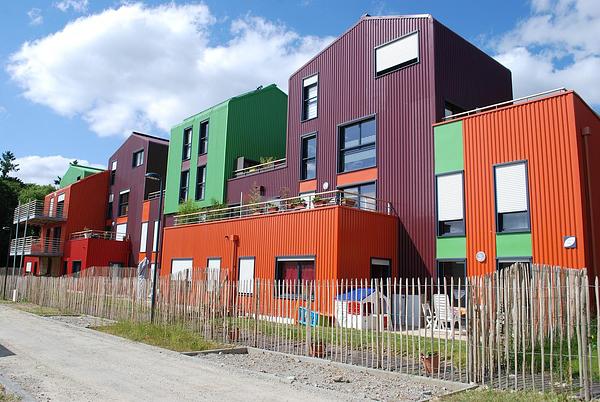September 2023
Domestic buildings under public control are used to provide social housing. The social housing sector has shown strong leadership on improving its fabric energy efficiency. In 2019, 45% of Scotland’s homes were rated EPC C or better, with social housing generally more energy efficient (56% EPC C or better) than the private sector (41%). This puts the sector in a strong position to champion the use of low-carbon heating systems.
The Energy Efficiency Standards for Social Housing (EESSH) aims to improve the energy efficiency of social housing in Scotland. It was introduced in March 2014 and set a first milestone for social landlords to meet for social rented homes by 31 December 2020, currently 85% of social rented homes are meeting this target. A review of Energy Performance Certificates for domestic and non-domestic properties (Feb 2019) concluded that reform was necessary to better align to net-zero and to underpin a future robust regulatory framework that could be used as a standard to measure properties. For more general information see SSN page on Energy Efficiency.
Over a third of tenants in social homes are in fuel poverty, with households in the lowest income bands having the highest rates of fuel poverty. Social landlords must ensure that decarbonisation objectives do not cut across Scotland’s social wellbeing agenda. The Achieving Net Zero in Social Housing report (Aug 2021) by the Zero Emissions Social Housing Taskforce sets out blueprint for net-zero emissions in social housing. It sets overarching recommendations to address the dual challenge of achieving net-zero emissions while keeping energy bills affordable and reducing fuel poverty. This will require a ‘Fabric First’ approach and a clear commitment to a just transition.
Domestic Building Retrofit Standards
A major challenge is ensuring that whole house retrofits are carried out on existing social houses to ensure a high standard is achieved. Extending the lifetime of existing buildings by renovation should be considered first rather than replacement, as this is often a more efficient use of materials and energy and results in fewer GHG emissions. The LETI Retrofit vs Rebuild offers guidance on how to compare whole life carbon for a retrofit versus its demolition and rebuild.
There are a variety of recognised building retrofit standards for design and workmanship and provide clear assessment methods, some are listed below:
- PAS 2035:2019 Retrofitting dwellings for improved energy efficiency - specification and guidance and PAS 2030:2019 Specification for the installation of energy efficiency measures in existing dwellings and insulation in residential park homes are British Standards Institute (BSI) standards that creates a recognisable quality standard for the retrofit and energy efficiency sector for housing. These follow “fabric first” principles meaning the use energy efficiency measures, such as the addition of insulation and better windows, to reduce the heating demand first, followed by low carbon heating and renewable technology. For further explanations about PAS 2035 and retrofit interventions guidance see the Social Housing Retrofit Accelerator.
- Passivhaus EnerPHit is considered the gold standard for energy efficiency in retrofitted buildings (equivalent to the Passivhaus standard for new builds). For example, it’s benchmark for renovators for space heating and cooling demand of 20-50kWh/m2/yr far exceeds current building regulations, for technical specifications see here.
- The Association for Environment Conscious Building (AECB) CarbonLite Level 1 & 2 Retrofit Standard is based on the EnerPHit specification, but it bears in mind the typical type of housing found in the UK, the increasing decarbonisation of the national grid, and the potential of low carbon heating systems. It also requires that retrofits adhere to PAS 2035 principles and sets a space heating demand target of 50 KWh/m2/yr.
Domestic Building Improved Design
New social housing must be built with a fabric first approach to ensure a high standard of energy efficiency and the utilisation of decarbonised heating while also minimising the property’s embodied carbon. For information on new build social housing refer to the SSN New Buildings and Embodied Carbon Emissions page.

